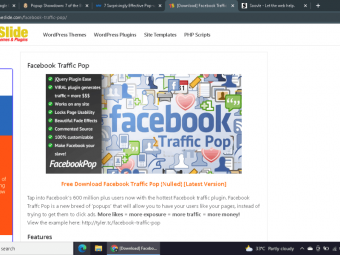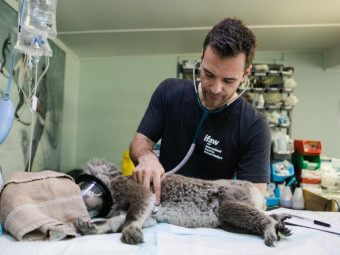Lgbt 101
Tags: Diversity and Inclusion
The complete course to help you understand the various people in the LGBTQ community (in just 1 hour)
Last updated 2022-01-10 | 4.5
- With this course- you will learn to be better able to support your LGBT+ colleague
- friend or family member; be a better ally:
- Learn to have a good
- respectful conversation on the topic of LGBT+
- Learn about the LGBT+ vocabulary: the meaning of the different letters in the LGBTQQIAP2S+... alphabet soup
What you'll learn
* Requirements
* Be curious* have an open mind
Description
After this 1 hour course, you'll understand who are part of the LGBT+ community and what it means to be Lesbian, Gay, Bi, Trans, Queer, or one of the many other groups of people that fall within this community.
You will also be able to have good, respectful conversation on the topic of LGBT+ as you'll know exactly what all terms mean, which ones to use when, and which words not to use.
You will be learning from someone that is actually a part of the LGBT+ community herself :)
(and you'll be able to ask me anything you want, any questions you might not want to (or dare to) ask LGBT+ people you know face-to-face)
(see underneath for full intro-video transcript)
------------------
If you haven’t lived under a stone in the past decades, you’ve probably heard some of the following teams before: LGBT, LGBT+, LGBTQ, LGBTQIA+, LGBTQQIAAP2S…. Why are there so many letters, and what do they even mean?
Diversity and inclusion, and specifically to this course, LGBT+ inclusion has become more and more of a prominent topic today. However, many people do not yet feel confident enough with all the different terms and concepts that belong to the topic of LGBT+ to have a good, respectful conversation about it with someone that identifies as LGBT+, or in any other setting, for example at work, school or with family or friends.
Wouldn’t it be nice to be able to learn about this from the safety of your own home, from someone that actually is a part of that LGBT+ community?
My name is Lara Louise, and I am an avid advocate of Diversity and Inclusion. As a Lesbian myself, my ‘specialty’ is LGBT+ inclusion. Over the past years I have taught many people about the topic of LGBT+, and now I can share my knowledge and experience with you through this online course.
In this course, I will teach you all about that full LGBT+ alphabet soup. After this, you’ll know exactly why there are so many letters, and what they all mean. You’ll also know when to use which words, and, not unimportantly, which words NOT to use.
Next to learning about which letters the alphabet soup consist of and what they mean, we will also talk about the differences between concepts such as Gender Expression and Gender Identity, so you know when you can use these in a conversation or recognize them when others do. Although it might seem complicated at first, I’ll share some easy tricks that’ll help you remember the meanings of these terms and when to use them.
There could be many reasons for you personally to participate in this course.
It could be that you have a friend, a family member or a colleague that has come out to you as being LGBT+ and you want to make sure that you know enough about the topic to support them properly;
Maybe for you, it’s not about knowing anyone personally, but you want to educate yourself so that you can better participate in discussions around the topic at school, at work or in any other settings.
Or maybe you identify as LGBT+ yourself and you are curious to learn a little more about the people that identify with the ‘other’ members of the alphabet soup.
Whatever your reason, I am very happy that you are here, and I’m confident that I’m able to make sure you get what you’re looking for.
Who this course is for:
- Anyone wanting to know more about the topic of LGBT / LGBT+ / LGBTQ / ... within the context of diversity and inclusion
- Anyone who wants to gain confidence to have a good, respectful conversation on the topic
Course content
4 sections • 21 lectures
Introduction Preview 02:12
This course is an attempt to provide you with as broad a picture on the LGBT+ community as is possible in just 60 minutes. However, I can not speak for the full LGBT+ community, nobody can.
Therefore, in each section of the course that is following, I will be attaching additional articles with more information, and to provide you with alternative perspectives by other people from within (or outside) the community.
Course Setup Preview 00:59
Intro: LGBT, LGBTQ, LGBTQIA+...Why are there so many letters? Where does it end? Preview 05:16
LGBT, LGBT+, LGBTQ, LGBTQIA+, LGBTQQIAAP2S....
Why are there so many letters, and where does it stop?
In this lecture, I explain the reason more and more letters are being added to the alphabet, and why we might never have a 'completed' acronym.
However (and this goes for the full course), I can not speak for the full LGBT+ community. Nobody can. This course is an attempt to provide you with as broad a picture as is possible in just 60 minutes. Therefore, in each section of the course I will be providing additional articles to provide you with alternative perspectives.
For this section on bisexuality, have a look at the external resources I added to this lecture: to offer you a broader perspective, have a look at the article called The Queer Acronym Alphabet – Limiting In Its Inclusiveness?. It shows that, even within the LGBT+ community, opinions are divided on the question 'where does it end?'.
Lesbian & Gay Preview 04:12
Although most people will know what the L and the G stand for in LGBT, we'll start with the basics.
I'll offer you a bit more background information where the terms come from, which terms are ok to use, and which are not (and why not).
Have a look at the New York Times article included to read a bit more on why the word Gay is preferred over the word Homosexual.
Bisexual Preview 03:13
What does it mean to be bisexual?
Is someone also considered bisexual if they're mostly attracted to people from the opposite sex, but have some interest in members from the same sex?
Is it easier to be bisexual than to be 'fully' gay or lesbian?
--
Check out the additional article that talks about how it is not easy for bisexual people to be 'believed', and about why it might be harder for men in specific to come out as bisexual (article: 'do men get a harder time for being bisexual?)
Extract:
There's also a double standard at play, says Barker: “Bisexual women tend to be sexualised, with bisexuality regarded as something that women do for the pleasure of men, as in mainstream porn. Bisexual men tend to be disbelieved entirely,” they tell me. “In both cases it is assumed that bisexual people are really into men and not women. So bisexual women are often assumed to be in it to titillate men, whereas bisexual men are assumed to be gay men who are not brave enough to come out as gay. It's often assumed that both will end up with men eventually.
Sexuality vs Gender Preview 01:46
Before going to the lecture about Transgender, it's important to discuss the difference between sexuality and gender.
2 different concepts that exist apart from each other; they do not influence each other necessarily.
Within the LGBT+ community however, members of both different groups are present. This brings up confusion so it is important to know the difference.
Transgender Preview 12:27
Longest video of this online course, because transgender people are still one of the more misunderstood and underrepresented groups within the LGBT community, so there is a lot to learn.
In this section I speak about what it means to be transgender, about what it means to be transitioning, about how transgender people are still being marginalized in many ways, but also about how to properly address a trans person as this can make an immense (positive) difference in a trans person's life.
I've included quite some resources that you can check out after you've watched this lecture that are all valuable if you're interested in learning more. But, if you can only pick one for some reason, please watch the video by John Oliver as I think it brings home the point very clearly.
Queer Preview 04:14
The word 'Queer' is a complicated one, not in the least because of its sensitive history.
The term is however being reappropriated by (part of) the LGBT+ community nowadays.
I'll take you through the history of the word, why the community now wants to regain control over the word, what exactly it means when someone says 'I'm queer', and I'll tell you whether it's ok for you to use the word.
Questioning Preview 00:45
Questioning - a term that is less known outside of the LGBT+ community. What does it mean to be 'questioning'?
Intersex Preview 05:12
'Intersex' is where we run into problems with our so-called 'binary society'.
I'll tell you all about what it means to be Intersex, how and when (not) to use the term, and give you a bit of background on why human rights institutions are now calling for an end to unnecessary 'normalizing' medical procedures.
Asexual & Aromantic Preview 01:49
What is asexual, and what is aromantic? How does a person decide whether they are asexual and/or aromantic?
Pansexual Preview 01:03
Being Pansexual is often confused with being Bisexual? What is Pan? What's the difference with being Bi?
Two-Spirit Preview 01:24
Western civilization is really one of the few in the world that still clings to the binary: male OR female, gay OR straight.
Many other cultures include a so-called 'third gender' - they always have. An example are the two-spirit people of the Native Americans and there are many other examples in other (ancient) societies.
Non-binary Preview 06:07
Some people feel they don’t neatly fit into the categories of man or woman, or male or female.
This is where the term 'non-binary' comes in (amongst other terms). I'll tell you about the different things this can mean for people, about the daily challenges non-binary people may face, and how you can ensure you address a non-binary person properly and respectfully.
Closing of the part on the LGBT+ alphabet soup Preview 01:47
Alphabet quiz
Through this test you can test your knowledge on the concepts that have been touched upon thusfar.
Genderbread person: gender expression, gender identity, sex & sexual attraction Preview 08:03
What are the differences between gender identity, gender attraction, a person's sex and a person's sexual orientation? I'll share an easy trick that'll help you remember. We'll dive deeper into each of these concepts and also talk about how you can see concepts such as gender expression evolving today (from women in skirts, to guys in skinny jeans, to men in full make-up).








 This course includes:
This course includes:
















